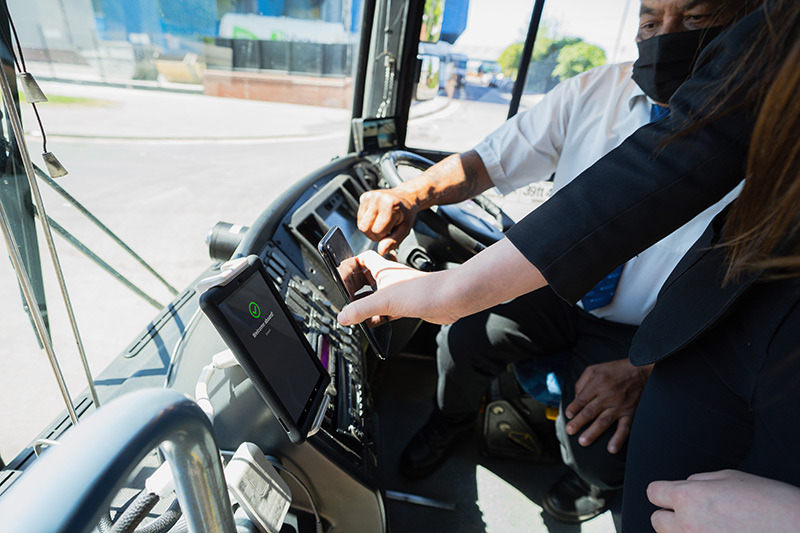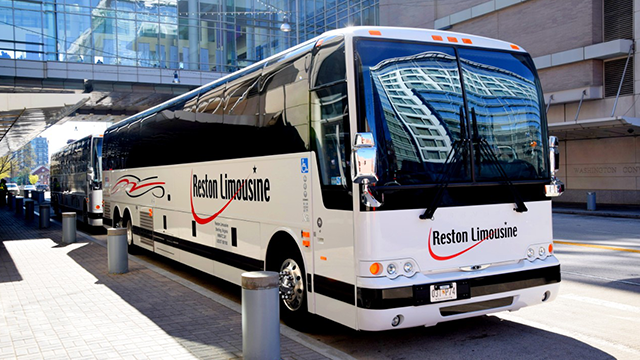20 New Ways For Choosing Event Transportation Sites
20 New Ways For Choosing Event Transportation Sites
Blog Article
Top 10 Tips To Ensure The Safety And Security Of Your Shuttle Bus For Employees
Here are the top 10 security tips to ensure the security of employee shuttles.
1. Conduct regular driver safety training
Make sure that all shuttle drivers undergo extensive training in safety, including defensive driving, emergency response procedures and customer service. Regular refresher courses can keep drivers updated on the best methods of driving and assist them in improving their abilities to deal with various scenarios.
2. Specific Vehicle Maintenance Protocols
Create a schedule of maintenance for your vehicle to ensure all shuttles work efficiently. Regular inspections must include brakes checks, tire rotations, tests for light, and other system that is essential. Keeping your vehicle well-maintained minimizes the chance of mechanical breakdowns, while also ensuring passenger safety.
3. Use GPS Tracking to improve Security
Install GPS tracking on shuttles to track their position in real-time. This technology enhances security by providing information about route deviations and stops that are not permitted. Tracking can help authorities locate vehicles in the event of an emergency, protecting passengers.
4. Establish Clear Emergency Procedures
Develop and clearly explain emergency procedures to drivers and passengers. These procedures include protocols for security threats, accidents medical emergencies, and other emergencies. Drills are an excellent method to make sure that employees are aware of how to respond in the event of an emergency.
5. Make sure you have Adequate Insurance Coverage
Every shuttle operation should be evaluated and insured. This should include collision insurance, liability insurance, and additional policies that are specifically tailored to the particular risks of employee transportation. Comprehensive insurance offers protection to the business as well as its employees, and all other third parties that are who are involved in an accident or incident.
6. Implement Safety Policies for passengers
Create and distribute a safety plan for shuttle passengers, including the guidelines for seatbelts and appropriate conduct. Display the policies in the shuttle and on communication platforms of your business to highlight their importance and encourage the observance of these policies.
7. Background checks of drivers
Check the background of all shuttle drivers to be sure they're clean and don't have any criminal records. This is crucial for creating a safe environment for all employees. The driver's records must be reviewed regularly to ensure that they conform to safety guidelines.
8. Install safety features on vehicles
Equip shuttles with safety features like airbags or rearview cameras. These features will reduce the likelihood of injury during an accident. Consider also investing in safety-enhancing technologies, such as collision prevention systems.
9. Promote a Culture of Safety Awareness
By promoting awareness, you can help employees to create a safe environment within your company. Inspire employees to disclose unsafe behavior or conditions, and then reward drivers who put safety first. Regular safety meetings newsletters, meetings or other types of communication can increase awareness of the importance of safety and make it a top priority.
10. Monitor and analyse incident reports
Track the safety incidents and reports including accidents. These reports can be used to determine trends or areas for improvement in the shuttle service. Make use of the data from these reports in order to improve policies as well as procedures and training to improve security.
Implementing these suggestions companies can establish a safe and secure environment for employees' shuttle transportation services, ensuring the well-being of passengers while eliminating the risk of transportation. Security and safety is a top priority for any organization. It not only protects employees but improves the overall level of satisfaction and confidence in the shuttle service. Read the top employee shuttle for more examples including shuttle to airport near me, airport transportation near me, transportation private, private car service near me, service shuttle, service shuttle, airport airport shuttle, san francisco airport shuttles to hotels, executive transportation, airport shuttle service near me and more.
10 Tips For Budgeting And Cost Considerations For Corporate Event Transportation Services
Here are 10 suggestions to help you determine the cost and budget for an enterprise transportation service.
1. Conduct a comprehensive cost analysis
Conduct a thorough cost analysis of every aspect. Included in this are vehicle leasing costs or rent, fuel expenses and salary for drivers. Additionally, there is maintenance, insurance and other charges associated with permits or parking. Knowing the total cost will aid in establishing an achievable budget.
2. Budget Framework: Develop an Clear Budget Framework
Set up a budget structure that outlines the amount your organization is prepared to invest in transportation. This framework must include all expenses identified and also allow for some flexibility to be able to handle unexpected costs. Setting up a budget will assist you in making better choices and will help ensure that your transportation expenses are in check.
3. Explore Transportation Alternatives
Examine the options for transportation, such as vans or shuttles. Consider factors such as comfort, capacity and convenience when evaluating the costs of each transportation alternative. Making the decision to select the least expensive option that will meet the needs of attendees will help optimize the budget for transportation.
4. Working with Transportation Providers
When selecting transportation providers ensure that you negotiate contracts in order to get the best rates. Many transportation companies will offer discounts to big events or bulk bookings. If you establish a solid relationship with the providers of services who are reputable, they can offer better rates and offer better service.
5. Plan for the Price of Fuel
Costs for fuel are a major element in the cost of transportation. The distance from the location and the expected amount of trips are important. Make sure you negotiate fuel-efficient car options with the transport provider to cut expenses.
6. Include Contingency Funds
Set aside a portion of contingency funds to cover unexpected expenses. Transportation is unpredictable. There are many factors that can go wrong, like vehicle breakdowns, or the need for extra travel. Contingency funds will ensure that you can address these situations without overspending or compromising quality of service.
7. Take into consideration Discounts for groups and packages
Transport companies may offer group discounts or packages. Many companies offer discounts for large groups or corporate events as well as special occasions. This can help you save a lot of cash. Find out if there are any packages available that include discounted services, like on-site coordinating or extra vehicles.
8. Monitor and Track Expenses
Maintain a close watch on all transportation-related expenses throughout the planning and execution phases. Use spreadsheets or budgeting programs to track your costs in real-time. The monitoring of expenses will help identify areas to cut and help keep your budget in check.
9. Collect Feedback for Future Budgeting
Following the event, collect feedback from attendees regarding their transportation experience and the associated costs. The analysis of this feedback will provide insights into the effectiveness of the transportation system and aid in future budgeting decisions. Knowing what worked and what didn't can help refine budgets for future events.
10. Assess the total cost of ownership
Assess the total cost of ownership (TCO) that includes both the rental or purchase cost as well as ongoing expenses such as maintenance insurance, depreciation, and maintenance. This doesn't just cover the cost of the car however, it also includes all ongoing expenses including depreciation, insurance and maintenance. Understanding TCO can assist you in making better choices and help you balance your initial costs with future financial implications.
The following tips can assist organizations to manage costs effectively and make educated decisions regarding budgets for corporate event transport services. A well-planned budget will ensure that transportation services are provided and helps ensure overall successful. Participants can concentrate on their experience rather than worrying about logistics. A properly-planned budget and cost control will enhance your organization's credibility and demonstrate that you are dedicated to accountability and efficiency. Read the top https://www.swoopapp.com/solutions/event-transportation-service/ for website advice including intl logistics, international logistics, companies in logistics, solution transport, transportation management solutions, reach logistics, transportation logistics services, international logistics, transporters near me, plan logistics and more.